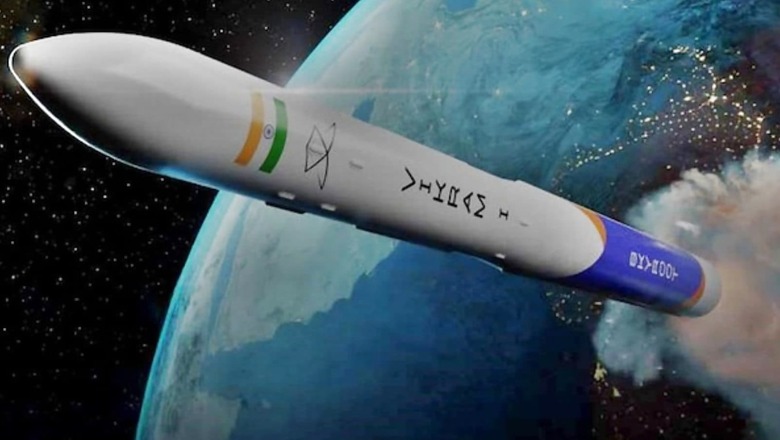
views
Skyroot Aerospace launched India’s first privately developed rocket into space on Friday in what is the country’s first private space launch.
The Prarambh mission, which launched as a demonstration flight with the Vikram-S launch vehicle, is historic because rockets have previously been the domain of the public sector in India, with the Indian Space Research Organisation leading the development, design, and launch of space missions. IN-SPACe, the country’s nodal agency for promoting and regulating space-tech players, has already granted the company technical launch clearance.
Thrilled to announce #Prarambh, our maiden launch mission, also the first for the Indian private space sector, with launch window between 12-16 Nov '22. Thanks to Chairman @isro for unveiling our mission patch and @INSPACeIND for all the support.Stay tuned????#OpeningSpaceForAll pic.twitter.com/xha83Ki2k0
— Skyroot Aerospace (@SkyrootA) November 8, 2022
WHY IS IT NAMED ‘PRARAMBH’?
The Hyderabad-based rocket start-up has named the mission as ‘Prarambh’ meaning “the beginning”, signifying a new era for the private space sector.
With this maiden mission, Skyroot Aerospace is set to become the first private space company in India to launch a rocket into space, heralding a new era for the space sector which was recently opened up to facilitate private sector participation, the company said.
“We could build and get our Vikram-S rocket mission-ready in such a short time only because of the invaluable support we received from ISRO and IN-SPACe, and the technology talent that we inherently possess,” said Pawan Kumar Chandana, CEO and Co-Founder.
Skyroot Aerospace’s launch vehicles are named ‘Vikram’ as a tribute to the founder of the Indian Space programme and renowned scientist Dr Vikram Sarabhai.
ABOUT THE VIKRAM-S
Vikram-S is a small-lift launch vehicle. According to Naga Bharath Daka, Chief Operating Officer of Skyroot Aerospace, is a single-stage sub-orbital launch vehicle that will carry three client payloads and assist in testing and verifying most of the technology in the Vikram family of space launch vehicles.
When a spacecraft departs from the gravitational field from which it was launched, it travels through space on a trajectory that crosses the atmosphere or surface of that body. As a result, the spacecraft cannot complete its orbit.
We’re fired up to announce our successful completion of full duration static fire test of Vikram-1 rocket stage ‘Kalam-100’. Peak Thrust: ~10TonsCarbon Fiber BuiltBurn time: 108s
Witness the roar in our firing footage: https://t.co/3DhKB8O2nj ????????#MadeInIndia pic.twitter.com/hzfLg7p2wB
— Skyroot Aerospace (@SkyrootA) May 19, 2022
WHY THE MISSION IS A BIG DEAL
Suborbital spaceflight is typically carried out at a lower altitude than orbital spaceflight, often at a height of around 100 kilometres above the Earth’s surface, and they are thought to be critical for completing space mission experiments before actual commercial missions take place.
Skyroot has been developing three different Vikram rocket variants. The Vikram-I can launch with 480 kilogrammes of payload, the Vikram-II with 595 kilogrammes, and the Vikram-III with 815 kilogrammes for a 500 km Low Inclination Orbit launch, said reports.
The company is developing modern space launch vehicles to place commercial satellites in orbit. By broadening its goal of making spaceflights accessible, dependable, and frequent for everyone, it hopes to remove barriers to entry for low-cost satellite launch services and space travel.
With inputs from IANS
Read all the Latest Explainers here




















Comments
0 comment